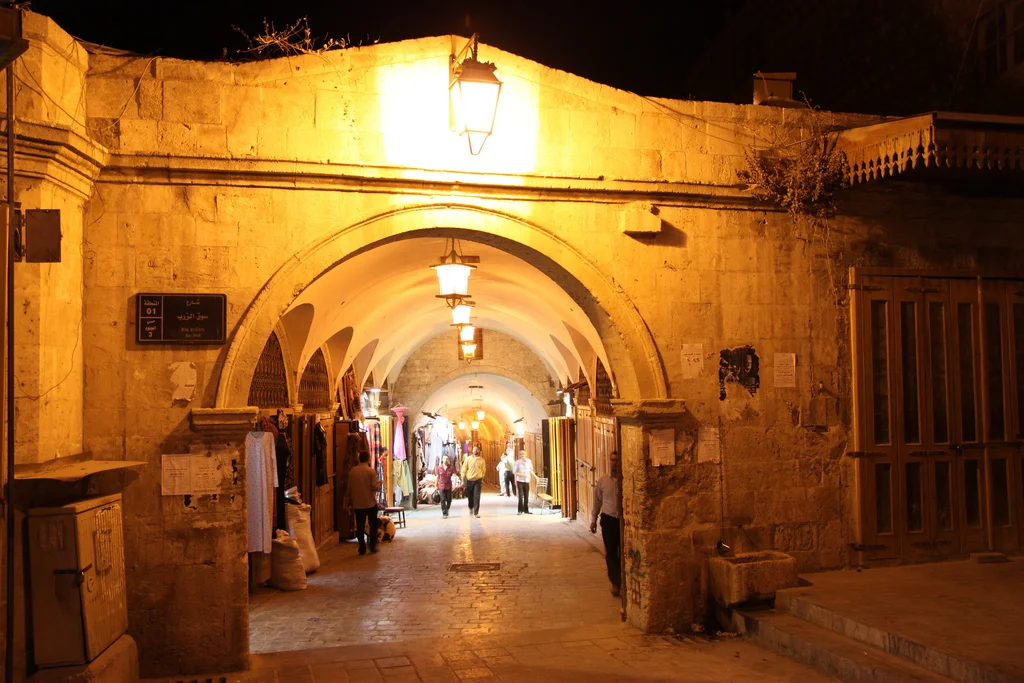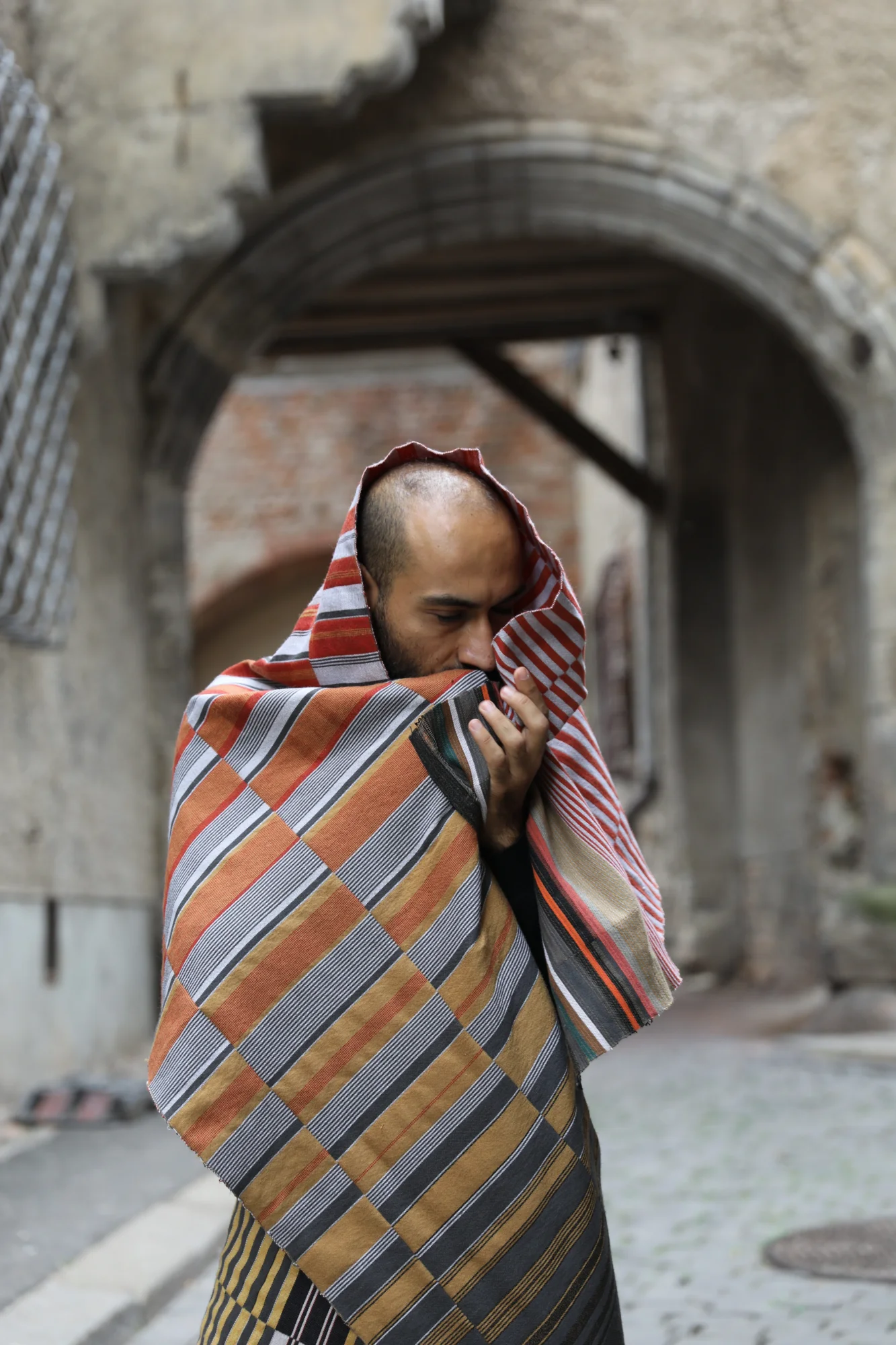by Bassel Abdulwahab
Ever since I left Aleppo, I´ve been trying to find a trace of it in every corner I walk by. As a textile designer, I had the strong desire to find ways to evoke my memories after I had moved to Germany. I wished to transform them to a work of art, embedding my so beloved memories within. But what exactly did I want to conserve?
In my new home, Halle, I came across a place by chance. One day, as I was walking through the market square, a glimpse of a narrow hidden neglected alley caught my attention. Something so inviting made me walk through the alley. With slow steps, inhaling the moist cool molecules of air, the odour of cooking from the small kitchen window on the right of the alley, the smoke of strong licorice shisha tobacco emanated from the nearby shisha bar on the left side of the alley penetrating my nose right through my mind. My heart beat accelerated as I believed I was finally going to find a hidden road to Aleppo at the end of that alley. The noise of passing cars triggered some suppressed memories from home. For a few minutes I was transferred to my beloved war torn Aleppo.


Fig. 1: Souk al-Zirb in Aleppo | Anas A – CC-BY-2.0 – Source: https://commons.wikimedia.org/wiki/File:Souk_Al_Zirb_Aleppo.jpg – no changes made)
Fig. 2: A narrow hidden alley in the city of Halle, Germany | Bassel Abdulwahab (CC-BY-NC-ND)
The similarities between this old stone archway in a lonely alley in the middle of Halle and the old city in Aleppo are astonishing. At night, standing under the arch, there is the same yellow glow from the street lights casting warm shadows on the ancient stones. The narrow alleyway and the hidden crevices invited my mind to go down the path of my memories. The one archway in Halle gave a suggestion of the labyrinth of archways in the old bazaar of Aleppo. Standing here, I could almost hear the sounds of the merchant calling out, the chatter of neighbors negotiating prices. But more than anything if I let my mind wander back, I remembered the smells.


Fig. 3+4: Making of fragrant sachets with Thyme and Aleppo soap | Bassel Abdulwahab (CC-BY-NC-ND)
Smells are so deeply engraved in the mind. An odour can hold memories of a place, specific moment and emotional connection. When I walked through the old covered bazaar of Aleppo, i used to smell the traditional scents, and maybe the strongest amongst them was Aleppo soap. Aleppo soap is world famous, made from olive oil and Laurel leaves. Other smells would be Zaatar (Thyme), as Aleppo is also famous for its Thyme mixture which is melded with a variety of spices and is sold in the markets. It is common to see shops selling both Aleppo thyme and soap as traditional products of the city.
I instantly knew that the smell was an essential ingredient of every piece I would create, if it was to revive my city Aleppo in my mind. In the attempt to store what I had seen, felt and smelled while walking through this lonely alley in Halle, I took a loom and started weaving.
As colours, I chose red and white for Halle, the city´s colours. For Aleppo I chose black, yellow, grey and brown as a representation of the urban landscape. Yellow and grey stones are specific to Aleppo and Syria as a whole. It can be found in a lot of architectural elements. The architectural style is called Ablaq and is characterised by alternating rows of light and dark stone as it can be seen inside the Aleppo Citadel, the Hammam Yalbugha or the Armenian Church in Aleppo. I created the colour scheme in stripes with a gradual gradient from one colour scheme to the other.
I wove the fabric double in order to create hidden pockets within which I could store material that contains small amounts of different scented substances in the hope they could evoke my memories from home. Of course I chose Aleppo Soap, fresh Thyme, cinnamon and Shisha tobacco. The pockets were created by the two fabrics being formed over one another. Just before closing the pockets I enclosed the scented material filled in teabags…I had found a way to conserve my memories.
To support the finished piece I created a short video of me weaving, highlighting the connection with Aleppo and showing footage of myself wrapped in my own work.
Documentary ‘Unforgotten’

Where can I buy the perfume .My friend had it on that was over3years ago and I’ve never forgotten the scent